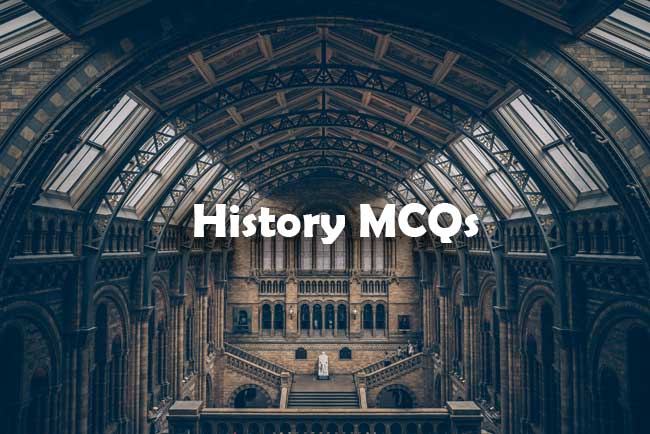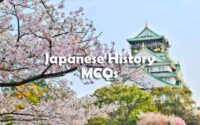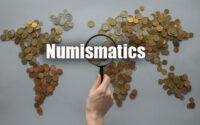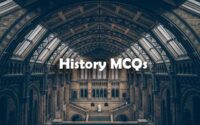History MCQ
History MCQ Questions and Answers papers are available here to download. This is the good news for the candidates who are preparing for history Multiple Choice Questions. Aspirants can download history MCQ pdf through online mode.

Applicants who are preparing for history MCQ can download history MCQ Sample questions from our website for free. Aspirants who are seeking for history Multiple Choice Questions Sample Question Papers, for those candidates our site is the useful platform to get history MCQ questions Papers.
With this history Multiple Choice Questions Papers, candidates can easily prepare for the exam. You can check these history MCQ and get an idea about model questions given in the written test.
MCQ on History
1. Which of the following sites has yielded an ivory pendent from the microlithic context?
(A) Bagor
(B) Damdama
(C) Mahadaha
(D) Sarai Nahar Rai
2. In the administrative scheme of Kautilya Sannidhata was
(A) In-charge of royal treasury
(B) Collector-General of revenue
(C) Leader of harem guards
(D) Governor of Forts
3. Which of the following Chaitya halls of western India is considered to be the earliest?
(A) Ajanta
(B) Bhaja
(C) Karle
(D) Kondane
4. Rulers of which dynasty bore the title Devaputra?
(A) Maurya
(B) Kushan
(C) Saka-Kshatrapa
(D) Vakataka
5. Which of the following pairs is not correct? Founders Cities
(A) Anangapala — Delhi
(B) Lalitaditya — Parihasapura
(C) Prithviraja — Ajmer
(D) Rajendra — Gangaikondacholapuram
6. The Kaivarta revolt occurred in Bengal during the reign of
(A) Devapala
(B) Vigrahapala
(C) Mahipala II
(D) Ramapala
7. An eastern Chalukya prince succeeded the Chola throne. He was
(A) Rajendral
(B) Kulottungal
(C) Vikrama Chola
(D) Rajadhiraja
8. Which among the following temples is reported to have served as a centre of higher education?
(A) Dasavatar temple at Deogarh
(B) Sasbahu temple at Gwalior
(C) Shore temple at Mamallapuram
(D) Trayipurush temple at Salotgi
9. Which of the following inscriptions furnishes information about silk-weavers (tantuvaya)?
(A) Mandasore inscription of Kumaragupta
(B) Damodarpur copper plate of Budhagupta
(C) Banskhera inscription of Harsha
(D) Gwalior inscription of Mihira Bhoja
10. The ruins of Somapura Mahavihara have been discovered at
(A) Bhagalpur
(B) Burdwan
(C) Nalanda
(D) Paharpur
11. Who called himself Kalikala Valmiki?
(A) Kalidasa
(B) Bhavabhuti
(C) Rajasekhara
(D) Sandhyakara Nandi
12. Which one of the following pairs is not correctly matched?
(A) Minhaj—us Siraj — Tabaqat-i-Nariri
(B) Shams»i-Siraj Afif— Tajul Maasir
(C) Nizam-ud-din — Tabaqat-i-Akburi Ahmad
(D) Khafi Khan — Muntakhab-ulLubab
13. Which one of the following is not a correct assessment?
(A) The battle 0fTalik0ta is one of the decisive battles in the history of India.
(B) The battle did vital damage to the Vijaynagar Empire.
(C) Ranga III was the last important ruler of Vijaynagar.
(D) Krishnadeva Raya died in 1540.
14. What was Polaj?
(A) Small piece of land
(B) Land regularly in cultivation
(C) Place for worship
(D) Share of Zamindar
15. Which one of these is not the work of Amir Khusrau?
(A) Qiran-us—Sadam
(B) Miftah-ul-Fatuh
(C) Ashiqa
(D) Tahkik-i-Hind
16. Which of the following is not correct relating to Sufism?
(A) Sufi mysticism sprang from the doctrine of Wahdaz-al Wujud.
(B) The practice of spiritual preceptorship was not prevalent in Sufism.
(C) Sama formed one of the popular modes of invocation to God.
(D) The Sufis in India accepted ideas and practices from Vedanta and Yoga.
17. Which one of the following is not true?
(A) Harihar’s coronation is placed at 1336.
(B) The struggle between Vijaynagar and the Sultans of Madurai lasted for four years.
(C) The Bahmani Kingdom came into existence in 1347.
(D) The alliance of the Bahmani Kingdom and Warrangal lasted for over 50 years.
18. The architectural remains of Vijayanagar are found at
(A) Devagiri
(B) Madura
(C) Hampi
(D) Warrangal
19. Who among the following was not the translator of Babur’s Memoirs?
(A) Abdur Rahim Khan-i-Khanan
(B) Lyden and Erskine
(C) Annette Susannah Beveridge
(D) Abul Fazal
20. Which one of these statements is not correct?
(A) Malik Nasir became master of Khandesh by overpowering Hasan.
(B) Akbar tried to annex Khandesh but failed.
(C) Khandesh was a province of Tughlaq s empire in the valley of the Tapti river.
(D) Adil Khan died in 1520.
| MCQ | Hard Questions |
| GK | Basic Questions |
| Quiz | Trivia |
| Easy Questions |
21. Which one of these statements is not true?
(A) Jami Masjid has been described as “a romance in stone” by Fergusson.
(B) The Palace of Forty Pillars is in Agra.
(C) Akbar’s mausoleum of Sikandara was inspired by the Buddhist Viharas.
(D) JamiMasjid0fAgraisalsoknownasMasjid-i-Jahan Nama.
22. Who has put forward the Junta theory related to Noorj ahan?
(A) Beni Prasad
(B) Jadunath Sarkar
(C) Riazul Islam
(D) Nurul Hasan
23. Who among the following was the next governor of Oudh after the suicide of Saja-ud-Khan?
(A) Safdar Jang
(B) Shuja-ud-daulah
(C) Ahim Ali Khan
(D) None of the above
24. Who among the following was appointed governor of Bengal by Shahjahan to punish the Portuguese?
(A) Qasim Ali Khan
(B) Asaf Khan
(C) Iradat Khan
(D) Shahryar
25. When did the Dutch establish a factory at Surat?
(A) 1625
(B) 1616
(C) 1639
(D) 1653
26. Which one of these was the largest city of North India during the Mughal period?
(A) Delhi
(B) Agra
(C) Lahore
(D) Lucknow
27. Which of the following represents the correct chronology of succession of Sikh Gurus?
(A) Arjan Dev — Ram Das —Harkrishna — Har Govind
(B) Har Govind — Ram Das — Harkrishna — Arjan Dev
(C) Ram Das — Har Govind — Arjan Dev — Harkrishna
(D) Ram Das — Arjan Dev — Har Govind — Harkrishna
28. The hun refers to a coin made of
(A) Brass
(B) Copper
(C) Silver
(D) Gold
29. What was meant by the term fituris?
(A) A tradition of tribal rebellion
(B) A tradition of protest by the Hindu religious group
(C) A tradition of peasant passivity
(D) A tradition of religious worship
30. What was meant by the term giras?
(A) Forced labour
(B) Religions fees
(C) Temple tax
(D) Customary dues
31. When was the first Factory Act implemented in India?
(A) 1878
(B) 1880
(C) 1881
(D) 1892
32. Which English official had observed “The village communities are little republics”?
(A) Charles Metcalfe
(B) Charles Qrant
(C) William Logan
(D) Henry Prinsep
33. Shah Wali Ullah wanted Islam to
(A) integrate with deviant sects.
(B) assimilate ideas from other religions.
(C) adopt the ideas of I udeo—Christian traditions.
(D) return to Quranic essentials.
34. The All India Anjumane-Khuddam-e-Kaaba was formed to
(A) unite Muslims and Christians for protecting Muslim holy places.
(B) unite all Indians for protecting Muslim holy places.
(C) unite Muslims for the injustices committed by British.
(D) unite people in support of the Khilafat.
35. Who among the following made the comment, “Bengal divided will pull in several different ways”?
(A) John Strachey
(B) Marquess of Landsdowne
(C) Herbert Risley
(D) George Stanley
36. What was meant by the term Muttadars?
(A) Estate holders
(B) Muslim learned persons
(C) Village headmen
(D) Islamic preachers
37. When was the Indian Industrial Commission established?
(A) 1920
(B) 1918
(C) 1916
(D) 1924
38. The Hilton Young Commission of 1926 dealt with
(A) war taxation.
(B) exchange-ratio problems.
(C) stimulating import of Lancashire goods.
(D) increasing the prices of Indian cotton goods.
39. Who launched the journal Pukhtun?
(A) Rahmat Ali
(B) Abdul Ghaffar Khan
(C) Muhammad Iqbal
(D) Abul Kalam Azad
40. When was Kashmir granted the status of a native state?
(A) 1840
(B) 1846
(C) 1848
(D) 1850
| Ancient India | Modern India |
| Medieval India | World History |
41. What does the term Akali mean?
(A) Sikh Gurus
(B) Sikh soldiers of the British Indian army
(C) Servants of the Eternal God
(D) Ordinary Sikhs
42. In Which year the British empire came to be known as the British Commonwealth of Nations?
(A) 1930
(B) 1935
(C) 1925
(D) 1920
43. Who called imperialism a ‘heirloom of the absolute monarchical state’?
(A) Karl Polyani
(B) Joseph Schumpeter
(C) Eric Hobsbawm
(D) V. I. Lenin
44. Who was the author of the book entitled, We, or Our Nationhood Defined?
(A) Jagat Narain Lal
(B) K. B. Hegdewar
(C) B. S. Moouje
(D) M. S. Golwalkar
45. The Indian States Reorganization Act was passed on
(A) 1950
(B) 1956
(C) 1958
(D) 1962
46. The Hindu nationalists represented in the Rashtriya Swayamsevak Sangh preferred
(A) the Hindus to make a reconciliation with the Muslims.
(B) the Hindus to take a secular position.
(C) the Hindus to stake a claim on the nation through a militant defence of Hinduism.
(D) the Hindus to adopt a liberal position vis-a-vis the nation.
47. Who was the author of the book entitled, Pakistan or Partition of India?
(A) Muhammad Ali Jinnah
(B) B. R. Ambedkar
(C) Liaqat Ali
(D) Tej Bahadur Sapru
48. The Congress under Nehru in drafting India’s First Five Year Plan advocated
(A) state strategies for social improvement and economic development.
(B) development of private enterprise.
(C) development of industries by foreign capital.
(D) withdrawal of the state from the issues of economic development.
49. The Punjab Land Alienation Act (1900) set in notion
(A) political opposition between the Muslim League landlords and the Sikh peasants.
(B) political opposition between merchants and farmers.
(C) political opposition to the Sikh rulers of the native states.
(D) political opposition between the Hindu banias and the Hindu landowners.
50. The Indian Peoples’ Theatre Associated raised funds for
(A) INA war trials
(B) cultural programmes
(C) Bengal famine
(D) middle class intellectuals
51. Which historian has commented, “East India Company’s army was central to the development of the Company’s political sovereignty”?
(A) Seema Alair
(B) Irfan Habib
(C) Muzaffar Alam
(D) Shahid Amin
52. In which year was the structure of the civil service reformed under the recommendations of the Public Service Commission?
(A) 1888
(B) 1890
(C) 1892
(D) 1896
53. Whom did Orsini, an Italian revolutionary tried to assassinate in January 1858?
(A) Tsar Alexander I
(B) Napoleon III
(C) Chancellor Bismarck
(D) Victor Emamuel
54. Which particular event symbolised the Peace in Europe in 1851?
(A) Great Exhibition in Moscow
(B) Great Exhibition in Brussels
(C) Great Exhibition in London
(D) Great Exhibition in Amsterdam
55. The Russo-Japanese agreement, virtually establishing a joint monopoly of Manchuria was signed on
(A) January 24, 1906
(B) December 31, 1906
(C) January 24, 1907
(D) July 30, 1907
56. Who had implemented the Ryotwari experiment in Baramahal?
(A) F. W. Ellis
(B) Thomas Munro
(C) Colin Mackenzie
(D) Alexander Reed



